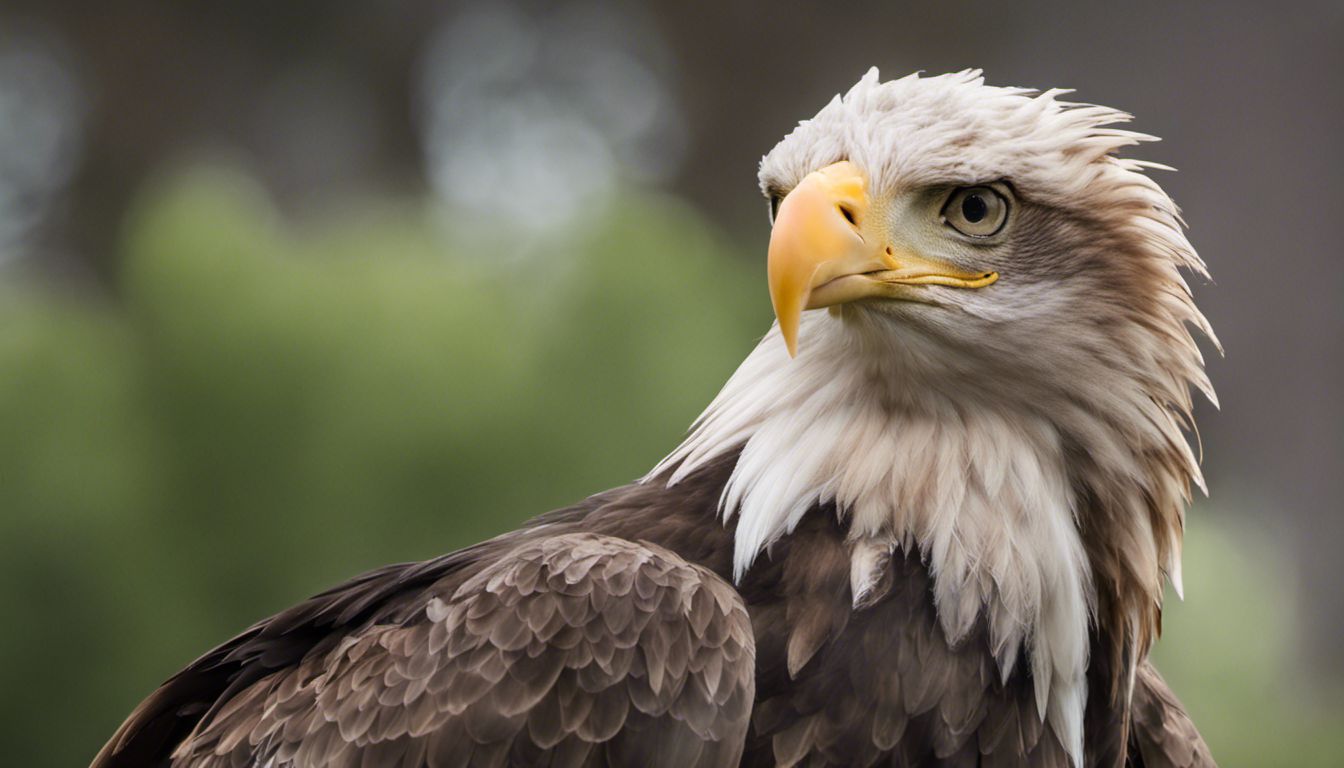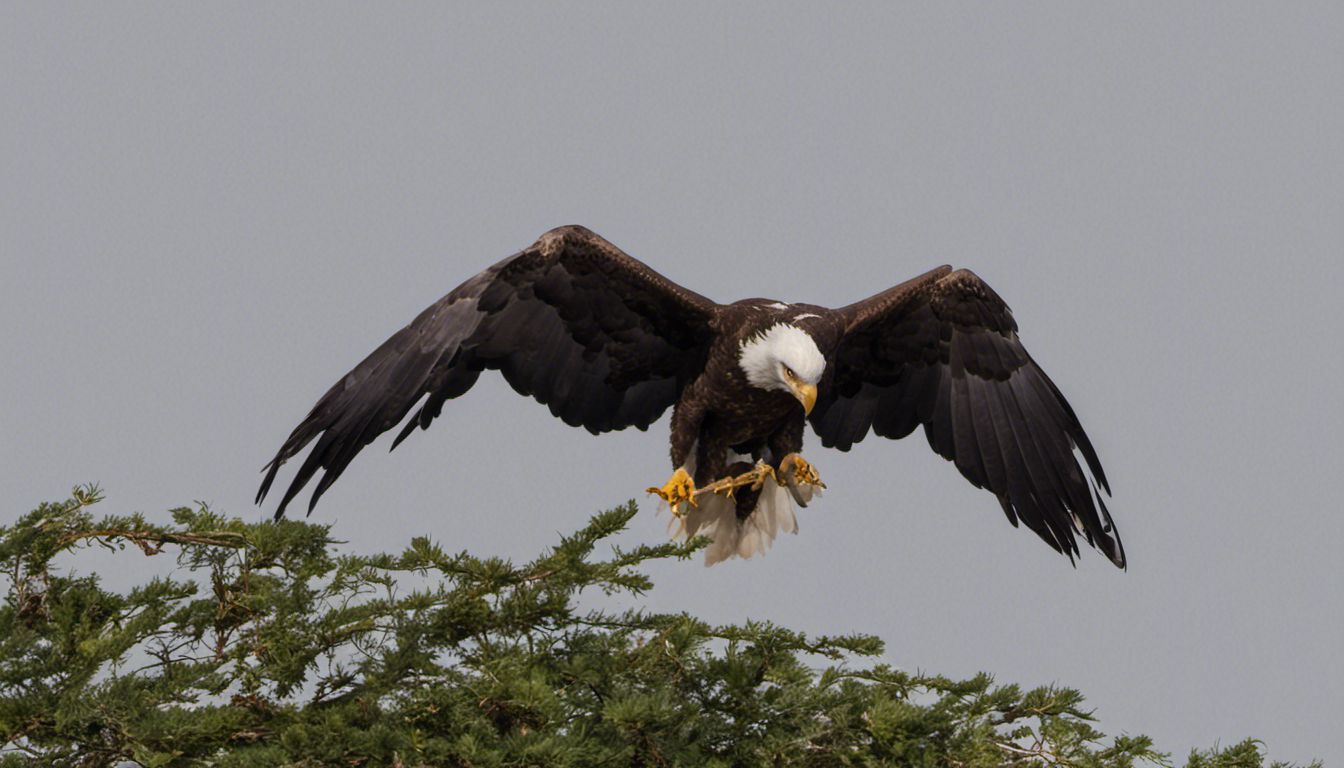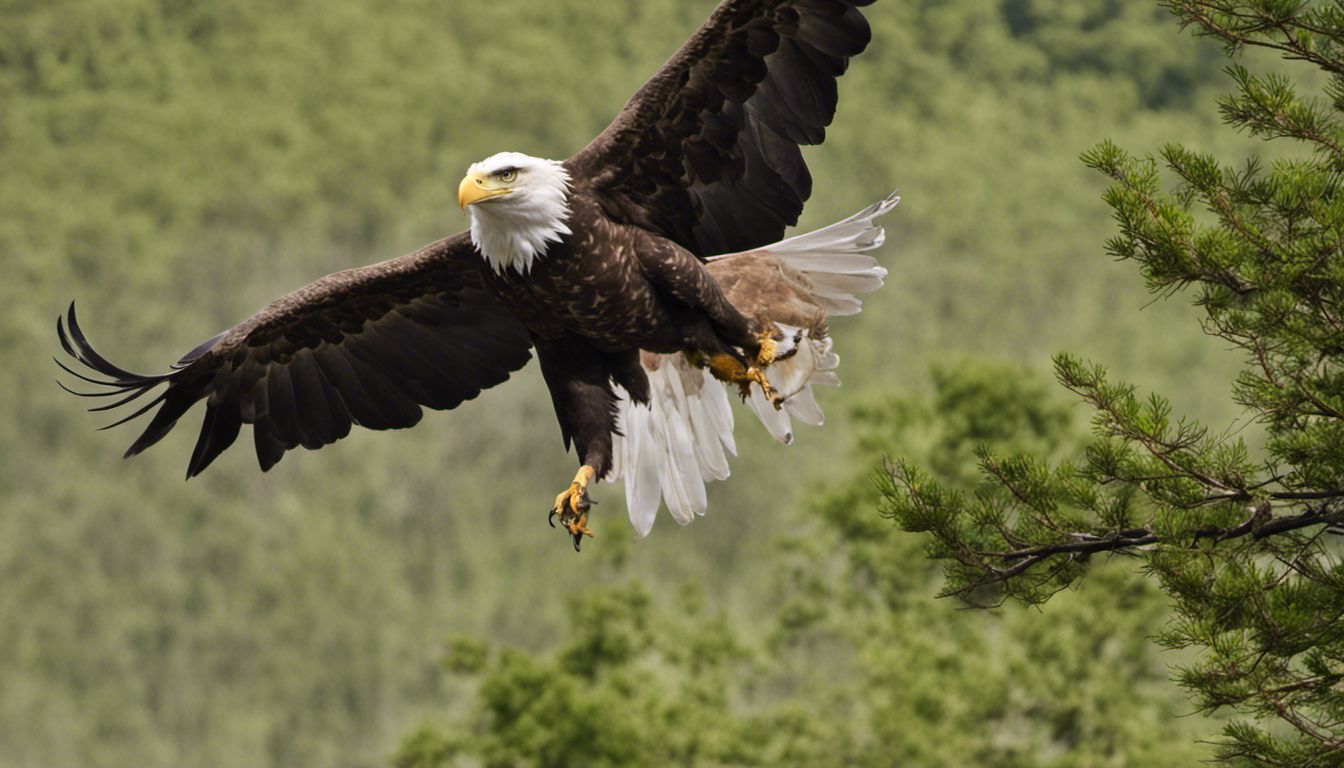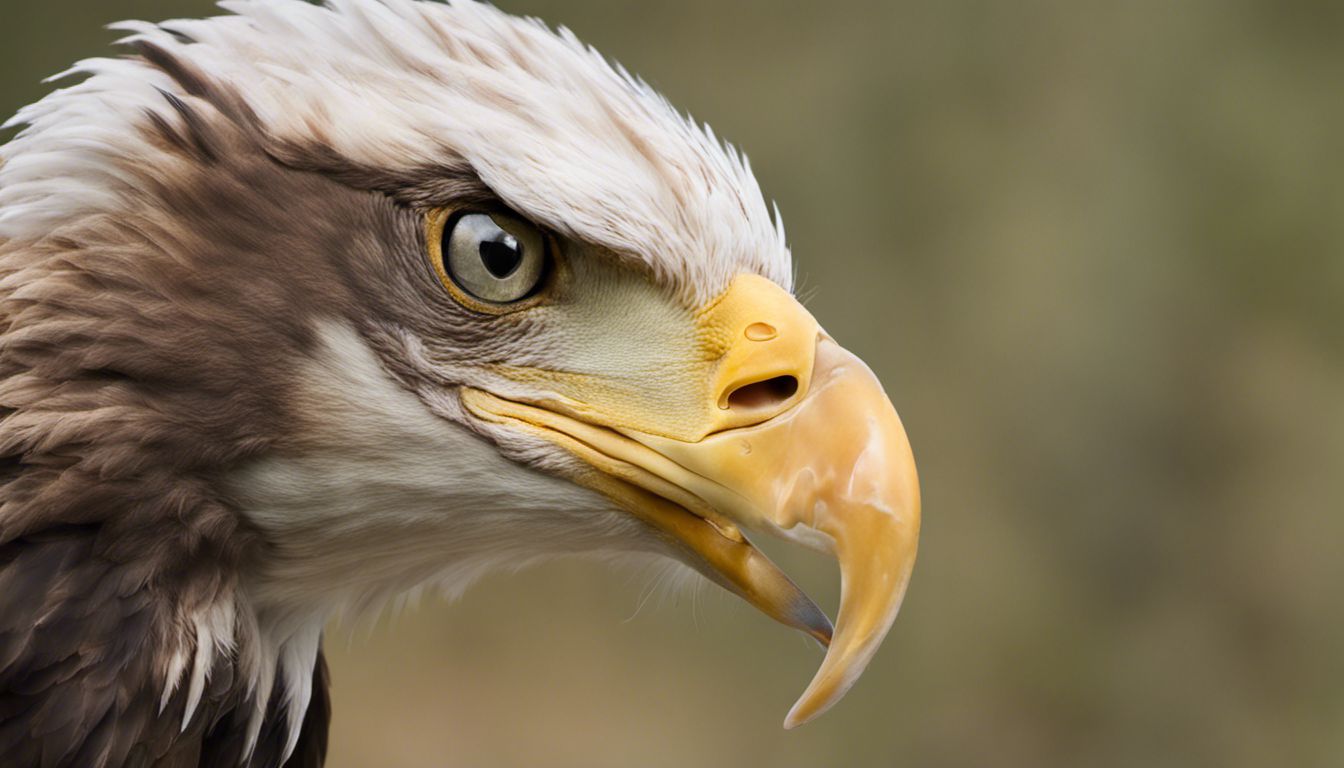A young bald eagle, also known as an eaglet, is unique in appearance with predominantly brown feathers, a lack of the iconic white head and tail, and a beak that starts black but transforms yellow as it matures. As they grow and move through different growth phases, they may exhibit mottled brown and white plumage until full maturity, which is reached at about five years.
- Eaglets are born small and gray, transforming to a brown color as they continue to develop.
- Young bald eagles do not have the distinctive white head and tail that the species is known for. These features develop as they mature.
- Their beak changes from black to yellow as they reach maturity. This is a clear identifying feature in young bald eagles.
- They go through various growth phases, each characterized by changes in size, strength, and feather coloration.
- Identifying a young bald eagle in its natural habitat can be tricky due to their brown coloration, which can blend in with surroundings.
1. Defining the Look of a Young Bald Eagle

Defining the look of a young bald eagle is an interesting journey into the world of this majestic bird. Unlike their parents, juvenile or immature bald eagles don’t possess the iconic white head nor the diamond white tailfeathers. Instead, they exude a completely different aesthetic charm.
- Color of Plumage: A young bald eagle exhibits a predominantly brown plumage, resulting in a rather uniform, dark appearance. The feathers retain their brown color until maturity.
- Size: Despite being young, these eagles are hardly small. A young eagle is almost the same size as an adult, approximately 30 inches in length with a wingspan of about 7 feet.
- Distinctive Features: Pay attention to its beak and talons, they hold the secret to the bird’s age. Young eagles possess a black beak that gradually turns yellow with age. The talons, though not color-indicative, are noteworthy for their massive, gripping strength.
Recognizing a young bald eagle can be a challenge due to their different appearance compared to adults, but these distinctive features offer a great clue.
2. Understanding the Growth Phases of Bald Eagles

Getting to grips with the growth phases of bald eagles is a mesmerizing dive into the life-cycle of these captivating birds. Immature bald eagles undergo several significant transformations as they age, particularly in relation to their plumage change, before they reach their iconic mature appearance.
- Fledgling stage (up to 3 months): Newly hatched eaglets are covered in light gray down, which quickly morphs into darker feathers. This is when they learn to fly, at around 3 months.
- Juvenile stage (3 months to 1 year): At this stage, their size is similar to an adult and their feathers turn brown. Their beak and eyes are dark brown or black.
- Sub-adult stage (1 to 4 years): They start to acquire their iconic look, with mottled white and brown feathers. Their beak and eyes begin to change from dark brown to the yellow of mature adults.
- Young adult stage (around 5 years): They finally acquire their white head and tail, and their beak and eyes are bright yellow. They are now fully mature.
By understanding these growth stages, we can better appreciate the remarkable journey an eagle goes through before reaching full maturity.
3. Identifying a Young Bald Eagle in its Natural Habitat

Finding a young bald eagle in its natural habitat is like seeking a hidden gem in the wild. Young bald eagles have discerning behaviors and unique characteristics that can help identify them. Observing these features closely can help us differentiate them from adults and other species.
- Habitat: Young bald eagles usually stay near their nest until they are about 5 to 6 weeks old. After learning to fly, they often hang around their birthplace, which is commonly around water bodies such as rivers, marshes, and lakes.
- Behavioral Differences: Unlike mature eagles, young ones tend to be less cautious and more curious. Their movements are less graceful and more erratic.
- Diet: Their diet is similar to that of adults and primarily consists of fish, but they are more likely to scavenge for food in their early years.
- Migration: Young ones often start their migration earlier than adults. They also have a different migration pattern, often exploring vast territories before settling down.
Monitoring these distinctive characteristics related to their habitat, diet, and migration patterns, among others, can aid in discerning a young bald eagle in the wild.

